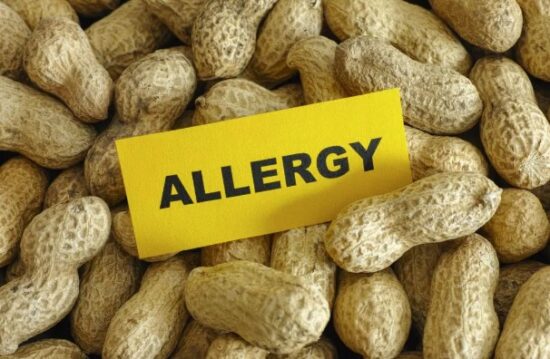When I was a child I didn’t know anyone in my elementary school with a peanut allergy. Peanut butter and jam sandwiches were a food staple. But today, peanut allergies are a big thing and one of the most common causes of anaphylaxis, the severest of reactions to a food or other invasive insults like insect bites, bee or wasp stings.
I know a little bit about anaphylaxis. It has happened to me twice. The first time it was a hornet sting. The second time it was mango. Both sent me to the hospital with the latter an overnight stay. To combat my insect venom reaction I took rush therapy exposing myself to bee and yellow jacket venom in small quantities until I could no longer tolerate the reaction. This type of desensitization is quite effective. It’s different than getting a hay fever shot to deal with seasonal allergies which I remember being part of my routine in my teenage years. But with insect bites and stings, the desensitization treatment worked because I’ve since been stung by wasps with no anaphylaxis. Mango allergy, however, has been a different story. I just avoid the fruit entirely, and when I go into a restaurant or on vacations, I inform those preparing my food to ensure they are not handling mangoes before meal preparation for me. So far it has worked with a backup EpiPen just in case. Too bad, because before my mango episode I loved eating them.
Peanut butter allergies are far more common than what caused my anaphylaxis episodes. Why is that? The Mayo Clinic explanation leaves me wanting. It talks about the risk factors noting that peanut allergies happen mostly in toddlers and infants because of an immature digestive system. The presence of peanut proteins can be from the nuts themselves, from peanut products like butter and cookies, from contact with a person who has recently eaten peanuts or something made with them, or from dust or aerosols containing peanut residue or oils. Peanut allergies are more likely to occur in individuals with other allergies, or with a family history of seasonal or food allergies, and may manifest in people with skin conditions like eczema.
I recently became a grandfather. My daughter never exhibited a peanut allergy. And she and her husband have introduced peanuts into my granddaughter’s diet early. The Mayo Clinic suggests within 4 to 6 months after birth as a way of reducing the risk of developing the allergic response.
The Mayo Clinic states that “the only way to prevent a reaction is to avoid peanuts and peanut products altogether.” But that’s not the only way according to the Murdoch Children’s Research Institute (MCRI) which along with the Telethon Kids Institute recently discovered a way to reprogram genes to shut down the allergic immune response. They published in May an article in the journal Allergy entitled “Remission of peanut allergy is associated with rewiring of allergen-driven T helper 2-related gene networks” which describes their discovery. Using oral immunotherapy the research findings showed that T helper 2-associate gene networks could be reprogrammed to suppress the response.
Professor Mimi Tang from MCRI notes that in studying the immune response of children with and without allergies they were able to detect “profound differences in network connectivity patterns between children who were allergic and those who were in remission. The same changes were also seen when we compared gene networks before and after immunotherapy.”
The study done in Melbourne, Australia, involved 62 children with peanut allergies between the ages of 1 and 10. In a controlled experiment half were given a placebo, and half received a probiotic oral immunotherapy treatment. Of the former, only 4% displayed remission from peanut allergy, but in the latter group, the immunotherapy worked for 74%.
Sarah Ashley, a doctor at MCRI described the science. “Certain changes in the allergen-specific immune cells, called Th2 cells, are critical to achieving lasting remission. Th2 cells are essential for generating allergen-specific antibodies and the development of food allergies. We found that the Th2 signalling that drives allergy is turned off in children in remission.”
In recent years when I would be flying for business purposes, airlines would note in onboard literature that their planes and the food being served including snacks were peanut free. Schools sent notes home to parents advising them not to have their children bring peanut butter sandwiches for lunch or snacks. But now with these research results, and with the method endorsed by the Mayo Clinic and others that advise parents to introduce peanuts into an infant’s diet very early, the goober allergy may finally be on the wane.

















Hi Len: back a couple of years after 9/11 we started MuVision to detect nuclear WMD in ship containers using muons and used the detectors now at CERN/ATLAS to show we could detect heavy metals (Tungsten) but DHS turned us and three other companies (major defense contractors) down. So nothing was done in that field. Natural muon flux is pretty low (about one per second per square cm. >0.5 Gev) but manufactured fluxes can be pretty high but dangerous. If time is not an issue, it’s quite possible. Right now I’m working on LENR, trying to get the world interested in funding serious research in it.